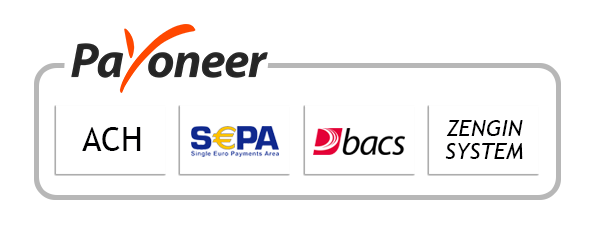
-
Report ID 138329 -
Published Date Sept. 2024 -
Delivery Format PDF/PPT/Word -
Editor's Rating
-
Report Details
Report Overview
The global industrial sensors market size is expected to be worth around USD 48.6 Billion by 2033, growing at a CAGR of 7.4% during the forecast period from 2024 to 2033.
The Industrial sensor market is experiencing a robust growth and is driven by the advancements in IoT, automation and data analytics. Different key trends in the market include the growing demand for the real time monitoring and predictive maintenance across various industries such as manufacturing, automotive, and energy. Enhanced connectivity and the integration of Industry 4.0 technologies are expanding the sensor applications thus leading to an improved efficiency and a reduced downtime.
This market is characterized by the innovation in sensor types thus catering to a diverse operational needs. However, various challenges such as higher cost of implementation and data security concerns also persist that are required to be addressed. The Industry sensor market presents a significant opportunity for the growth and investment that is fueled by technological advancements and a shift towards digital transformation.
Key Takeaways
- The global industrial sensors market size is expected to be worth around USD 48.6 Billion by 2033, from USD 23.8 Billion in 2023, growing at a CAGR of 7.4% during the forecast period from 2024 to 2033.
- In 2023, the pressure sensor segment held a dominant market position, capturing more than a 23.1% share of the global industrial sensors market.
- In 2023, the contact segment held a dominant market position, capturing more than a 68.5% share of the global industrial sensors market.
- In 2023, the manufacturing segment held a dominant market position, capturing more than a 25.9% share of the global industrial sensors market.
- In 2023, the Asia-Pacific region held a dominant market position in the global industrial sensors market, capturing more than a 43.3% share.
Sensor Type Segment Analysis
In 2023, the pressure sensor segment held a dominant market position, capturing more than a 23.1% share of the global industrial sensors market. Pressure sensors tends to dominate the industrial sensor market due to their critical role in monitoring and controlling the industrial processes. It provides the required data for maintaining operational efficiency, safety and reliability as it measures the pressure levels in different systems like hydraulic, pneumatic and fluid control systems.
The versatility of pressure sensors makes it an integral part in the diverse applications such as manufacturing, automotive, aerospace and energy sectors. Its ability to ensure accurate pressure measurement helps in preventing equipment failure, optimize the performance and reduce maintenance costs.
Additionally, the growing emphasis on the automation and real-time data analytics drives the demand for advanced pressure sensors, thus reinforcing its significance in enhancing the industrial operation management and operational efficiency.
Technology Segment Analysis
In 2023, the contact segment held a dominant market position, capturing more than a 68.5% share of the global industrial sensors market. The contact segment of the industrial sensor market remains a prominent aspect due to its critical role in the precise measurements and control within the manufacturing and process industry.
Different contact sensors such as temperature and pressure sensors offers a direct interaction with materials or machinery thus ensuring accurate data collection and system responsiveness. Its reliability in harsh environments and its ability to provide a real-time feedback makes it indispensable for quality control and safety applications. Additionally, contact sensors are essential for applications requiring close monitoring of the physical parameters including the fluid levels or the surface conditions.
End User Segment Industry
In 2023, the manufacturing segment held a dominant market position, capturing more than a 25.9% share of the global industrial sensors market. The manufacturing segment dominates the industrial sensor market due to its critical need for process optimization, quality control, and operational efficiency.
Sensors tend to play a pivotal role in monitoring variables like temperature, pressure and vibration that are essential for maintaining equipment performance and ensuring product quality. The adoption of automation and Industry 4.0 technologies further drives sensor integration, enabling real-time data collection and predictive maintenance.
This helps in reducing downtime, enhancing safety, and lowering operational costs. Additionally, the push of smart factories and the increased focus on energy efficiency contributes to the rising demand for advanced sensors in manufacturing. As the sector grows, there is an ongoing advancement in sensor technology that continues to bolster its prominence in the market.
Key Market Segments
By Sensor Type
- Pressure Sensors
- Temperature Sensors
- Level Sensors
- Flow Sensors
- Position Sensors
- Force Sensors
- Other Sensor Types
By Technology
- Contact
- Non-Contact
By End-Use Industry
- Manufacturing
- Chemicals and Petrochemicals
- Oil and Gas
- Energy and Power
- Pharmaceuticals
- Mining
- Other End-Use Industries
Market Dynamics
Driver: Adoption of Smart Factories and IIoT
The industrial sensors market is experiencing significant growth, driven largely by the adoption of smart factory setups and the integration of Industrial Internet of Things (IIoT) technologies. These advancements are revolutionizing industrial operations by enhancing efficiency and productivity through automation and connectivity. As industries increasingly incorporate IIoT, they demand more sophisticated sensor technologies that can provide real-time monitoring and data analysis, leading to predictive maintenance capabilities and optimized operational processes.
Restraint: Design Complexity and High Costs
A major restraint in the industrial sensors market is the complexity and high cost associated with advanced sensor systems, especially gas sensors. These sensors often integrate multiple components like amplifiers and microcontrollers, which not only add to the complexity but also increase the cost. This makes them less accessible for small to medium enterprises (SMEs) and limits their widespread adoption. The ongoing challenge is to develop cost-effective sensor solutions without compromising on functionality or accuracy.
Opportunity: Wireless Sensor Technology
The market is witnessing a growing opportunity in the development and deployment of wireless sensor technologies. Post-pandemic, the need for remote monitoring of industrial assets has become crucial. Wireless sensors offer the ability to monitor various aspects of industrial operations remotely, reducing maintenance costs and efforts. This technology is particularly useful in industries like oil and gas, where sensors need to operate in hard-to-reach or hazardous environments. The trend towards wireless sensors is expected to continue, driven by their benefits in cost reduction and operational efficiency.
Challenge: Precise Performance Requirements
The industrial sensors market faces a challenge in meeting the precise performance requirements demanded by advanced applications across different industries. Each sector, like automotive or oil and gas, has specific measurement parameters and needs that sensors must meet to be effective. This diversity in requirements can lead to challenges in designing sensors that are universally effective across various applications. Ensuring accuracy and reliability in these complex environments remains a significant hurdle for sensor manufacturers.
Growth Factors
- Increased adoption of Industry 4.0: The expansion of Industry 4.0 initiatives focuses on the increasing use of sensors in smart manufacturing and digitalization, thus contributing to the market growth
- Increased demand for Predictive maintenance: There is an increasing need for sensors that enable predictive maintenance, minimize downtime, and improve operational efficiency.
- Government initiatives: There are supportive policies and investments in smart infrastructure and industrial automation.
- Need for energy efficiency: There is a higher focus on sustainability and energy-efficient industrial practices, which sensors help to monitor and optimize.
Latest Trends
- Smart Sensors: currently, there is an increasing adoption of smart sensors with self-diagnosis and self-calibration capabilities thus enabling advanced automaton.
- Edge Computing: there is an increase in integration of the sensors with edge computing technologies to process the data locally for faster decision-making and reduce latency.
- Multi sensor systems: there is an increased use of multi sensor systems for comprehensive monitoring and advanced analytics across different industrial process.
Regional Analysis
APAC region is leading the market
In 2023, the Asia-Pacific (APAC) region held a dominant market position in the global industrial sensors market, capturing more than a 43.3% share. The Asia Pacific region dominates the industrial sensor market due to its robust manufacturing base, particularly in countries like China, Japan, South Korea, and India.
These countries lead in the presence of various industries including the automotive, electronics, and heavy machinery, that tend to drive the significant demand for industrial sensors to enhance automation, quality control and operational efficiency.
Additionally, the rapid industrialization and the adoption of Industry 4.0 technologies across the region further fuel the market demand in the region. Government initiatives supporting smart manufacturing and digital transformation in the APAC economies also contribute to the dominance of this market.
Key Regions and Countries
North America
- US
- Canada
Europe
- Germany
- France
- The UK
- Spain
- Italy
- Russia
- Netherlands
- Rest of Europe
Asia Pacific
- China
- Japan
- South Korea
- India
- Australia
- Singapore
- Thailand
- Vietnam
- Rest of APAC
Latin America
- Brazil
- Mexico
- Rest of Latin America
Middle East & Africa
- South Africa
- Saudi Arabia
- UAE
- Rest of MEA
Key Players Analysis
There are numerous players operating in the market. One of the leading players among these is Honeywell International which has a broad profile of sensors for automation, aerospace, and healthcare. Honeywell’s focus on innovation and smart technologies strengthens its position in the market.
Another significant player in the market is Siemens AG which is renowned for its industrial automation solution, as it integrates sensors into its comprehensive digitalization and Industry 4.0 offerings, thus making it a dominant force in the manufacturing and energy sector.
Top Key Players in the Market
- Analog Devices, Inc.
- Texas Instruments Incorporated
- Honeywell International Inc.
- ABB Group
- TE Connectivity Ltd.
- Panasonic Corporation
- Siemens AG
- NXP Semiconductors N.V.
- STMicroelectronics N.V.
- Omron Corporation
- Other Key Players
Recent Developments
- In September 2024, Ontech Group, which deals in electromagnetic field sensor technology, announced the launch of 128-channel Application-Specific Integrated Circuits (ASICs), designed to significantly enhance the technical capabilities and commercial benefits of its revolutionary Controlled Electromagnetic Field (CEMF) sensor.
- In June 2024, Baker Hughes launched gas, flow, and moisture measurement sensor technologies designed to improve safety performance and drive productivity in oil and gas, hydrogen, and other applications across energy and industrial sectors.
Report Scope:
Report Features Description Market Value (2023) $ 23.8 billion Forecast Revenue (2033) $ 48.6 billion CAGR (2024-2033) 7.4 % Base Year for Estimation 2023 Historic Period 2019-2022 Forecast Period 2024-2033 Report Coverage Revenue Forecast, Market Dynamics, COVID-19 Impact, Competitive Landscape, Recent Developments Segments Covered by Sensor Type (Pressure Sensors, Temperature Sensors, Level Sensors, Flow Sensors, Position Sensors, Force Sensors, Other Sensor Types), by Technology (Contact, Non-Contact), by End-Use Industry (Manufacturing, Chemicals and Petrochemicals, Oil and Gas, Energy and Power, Pharmaceuticals, Mining, Other End-Use Industries) Regional Analysis North America – US, Canada; Europe – Germany, France, The UK, Spain, Italy, Russia, Netherlands, Rest of Europe; Asia Pacific – China, Japan, South Korea, India, Australia, Singapore, Thailand, Vietnam, Rest of APAC; Latin America – Brazil, Mexico, Rest of Latin America; Middle East & Africa – South Africa, Saudi Arabia, UAE, Rest of MEA Competitive Landscape Analog Devices, Inc., Texas Instruments Incorporated, Honeywell International Inc., ABB Group, TE Connectivity Ltd., Panasonic Corporation, Siemens AG, NXP Semiconductors N.V., STMicroelectronics N.V., Omron Corporation, Other Key Players Customization Scope Customization for segments, region/country-level will be provided. Moreover, additional customization can be done based on the requirements. Purchase Options We have three licenses to opt for Single User License, Multi-User License (Up to 5 Users), Corporate Use License (Unlimited User and Printable PDF) -
Table Of Content
Research Insights & Deliverables
 Development and Future Forecast
Development and Future Forecast Competitive benchmarking
Competitive benchmarking Company Revenue Statistics
Company Revenue Statistics Rising Regional Opportunities
Rising Regional Opportunities Technology Trends and Dynamics
Technology Trends and Dynamics Technology Assessment
Technology Assessment
-
Inquiry Before Buying
Research Insights & Deliverables
 Development and Future Forecast
Development and Future Forecast Competitive benchmarking
Competitive benchmarking Company Revenue Statistics
Company Revenue Statistics Rising Regional Opportunities
Rising Regional Opportunities Technology Trends and Dynamics
Technology Trends and Dynamics Technology Assessment
Technology Assessment
-
Request Sample
Research Insights & Deliverables
 Development and Future Forecast
Development and Future Forecast Competitive benchmarking
Competitive benchmarking Company Revenue Statistics
Company Revenue Statistics Rising Regional Opportunities
Rising Regional Opportunities Technology Trends and Dynamics
Technology Trends and Dynamics Technology Assessment
Technology Assessment














